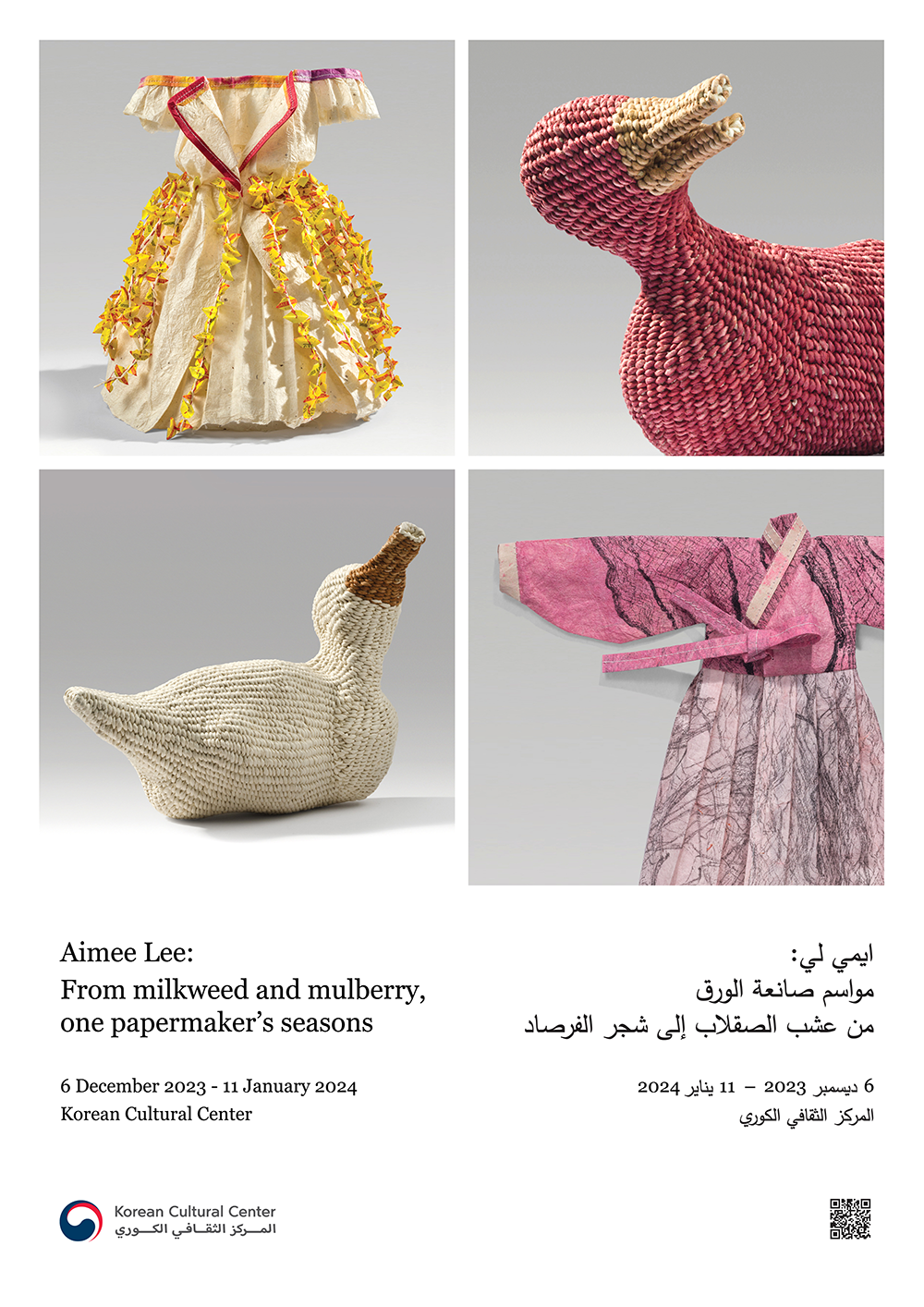Aimee Lee: From milkweed and mulberry, one papermaker’s seasons
- DATE
- 2023-11-28

The Korean Cultural Center is pleased to host Aimee Lee’s solo exhibition.
■ Title: Aimee Lee: From milkweed and mulberry, one papermaker’s seasons
■ Venue : Korean Cultural Center, Yas Creative Hub P2, Yas Island, Abu Dhabi
■ Date : 6 December 2023 – 11 January 2024
■ Opening Hour : (SUN-THUR) 10 am - 7 pm | (FRI) 10 am - 2 pm | (SAT) Closed
■ Artworks : 35 pieces of Hanji art
■ Admission Free
■ RSVP to Opening Reception: Registration(Click) – 6 December, 4 PM
Aimee Lee:
This exhibition shares several bodies of art by Aimee Lee, award-winning artist and author, and leading hanji scholar and practitioner in North America. In her research journeys to Korea over the last 15 years, she learned to make hanji (Korean paper) from direct harvest of paper mulberry trees (Broussonetia papyrifera) to traditional techniques of finishing, dyeing, cording, twining, texturing, and fusing hanji. She has studied with national and regional intangible cultural property holders in hanji making and bamboo screen making, and has used plant fibers for papermaking since 2003. Her art is rooted in ancient Korean artifacts, materials, skills, and tools, while her training as a contemporary artist and papermaking naturalist guide her seasonal plant harvests and cyclical work patterns. Common threads of her research, teaching, writing, and art combine into a tapestry of themes that include hidden histories, ceaseless labor, gender roles, human ecology, and social responsibility.
Lee is part of the Korean diaspora and, since birth, an American. She has worked with a myriad of plants to make and dye her paper, and switches seamlessly between fibers native to Asia and North America. She has worked extensively with milkweed (genus: Asclepias) across the U.S. through residencies and teaching, because it is the most adaptable to Korean papermaking techniques with a luster and feel completely its own. She harvests this “weed” from urban lots, private gardens, open fields, and anywhere it grows freely and abundantly. To share these methods more widely, she wrote Making Milkweed Paper (Bionic Hearing Press, 2018). This guidebook has helped numerous students, papermakers, and enthusiasts to develop a new relationship with this robust perennial that anchors a whole ecosystem for different creatures.
Artist’s Note
All of the art on view is made of handmade paper, almost always with plant fibers that have been prepared by hand. It includes dress that hangs away from the body as its own statement, to celebrate all the possibilities of hanji to be sewn, crumpled, dyed, and transformed into a canvas for color, pattern, the matrix of its own fiber—via bark lace prints—and echoes of Korean dress culture. Lee is one of the few American jiseung (hanji basketry) practitioners, and exemplars of her work in both more traditional and utilitarian vessel forms contrast with her highly sought hanji ducks. These birds, while inspired by Korean wedding ducks, have taken on a life of their own as they gesture with different shapes and colors, opening their bills to tell their own stories. -- Artist website: https://aimeelee.net/


